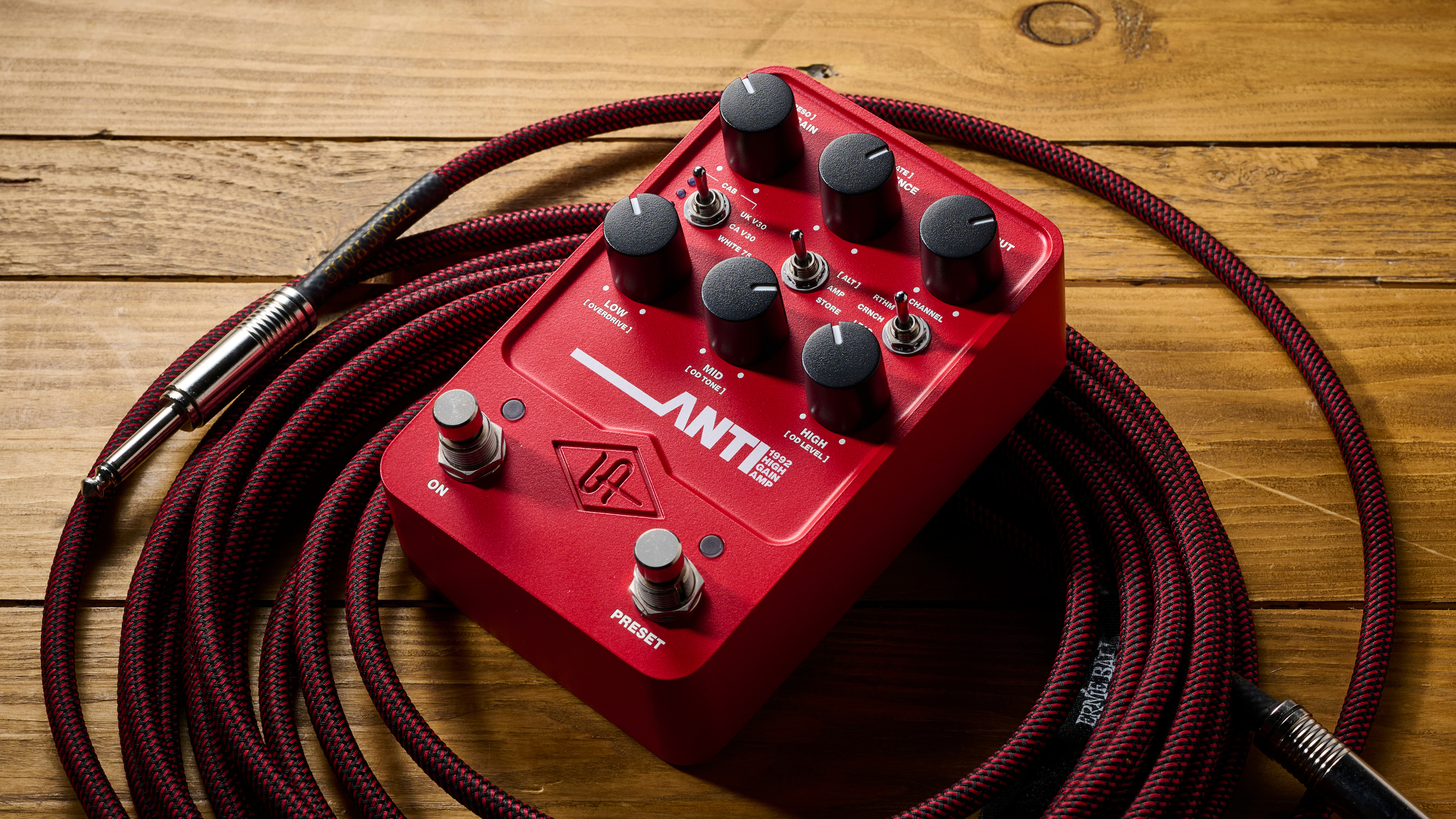
Universal Audio Anti 1992 High Gain Amp: What is it?
A couple of years back, Universal Audio entered the pedal amp emulation modelling game with a line of three boxes: Woodrow, Dream and Ruby. All scratching those Fender Tweed, Deluxe and VOX AC-30 itches. It was a solid start for a company well-known for its digital emulation of classic analogue gear and it opened the floodgates for even more pedal amp releases, and a ton of effects.
It has, however, taken the Scotts Valley-based firm two years to really hit the high (gain) notes, so you can imagine our glee at the announcement of the UAFX Anti 1992 High Gain Amp – a Peavey 5150 emulation to sate those with a love of heavier tube amp tonality with a smattering of UA know-how.
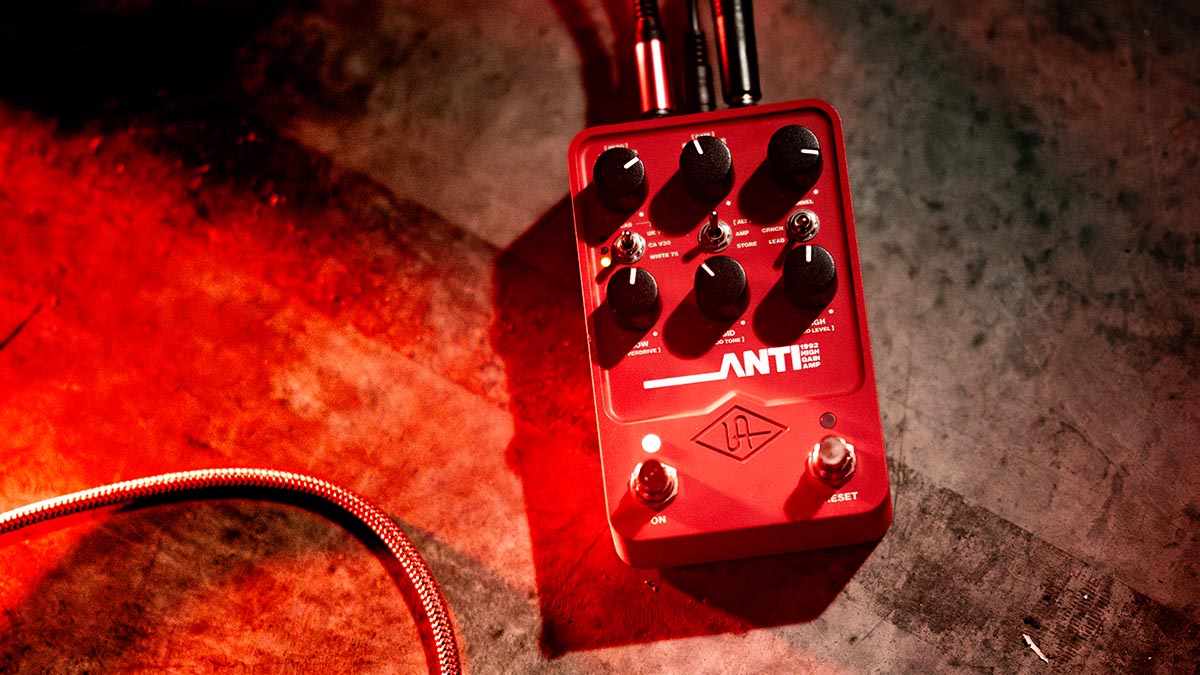
While the 5150 is the headlining act here, there's also room for UA to squeeze in a few appropriate extras. Alongside this legendary metal monster, there is the addition of the ubiquitous Tubescreamer-esque overdrive, TC Electronic-style preamp, noise gate and three onboard cab sims (you get three more when you register the product).
The pedal amp modeller market is chock full of choices, no matter your proclivity towards the higher end of the gain spectrum, so our inevitable question is: has Universal Audio upped the ante in the war of gain?
Universal Audio Anti 1992 High Gain Amp: Specs
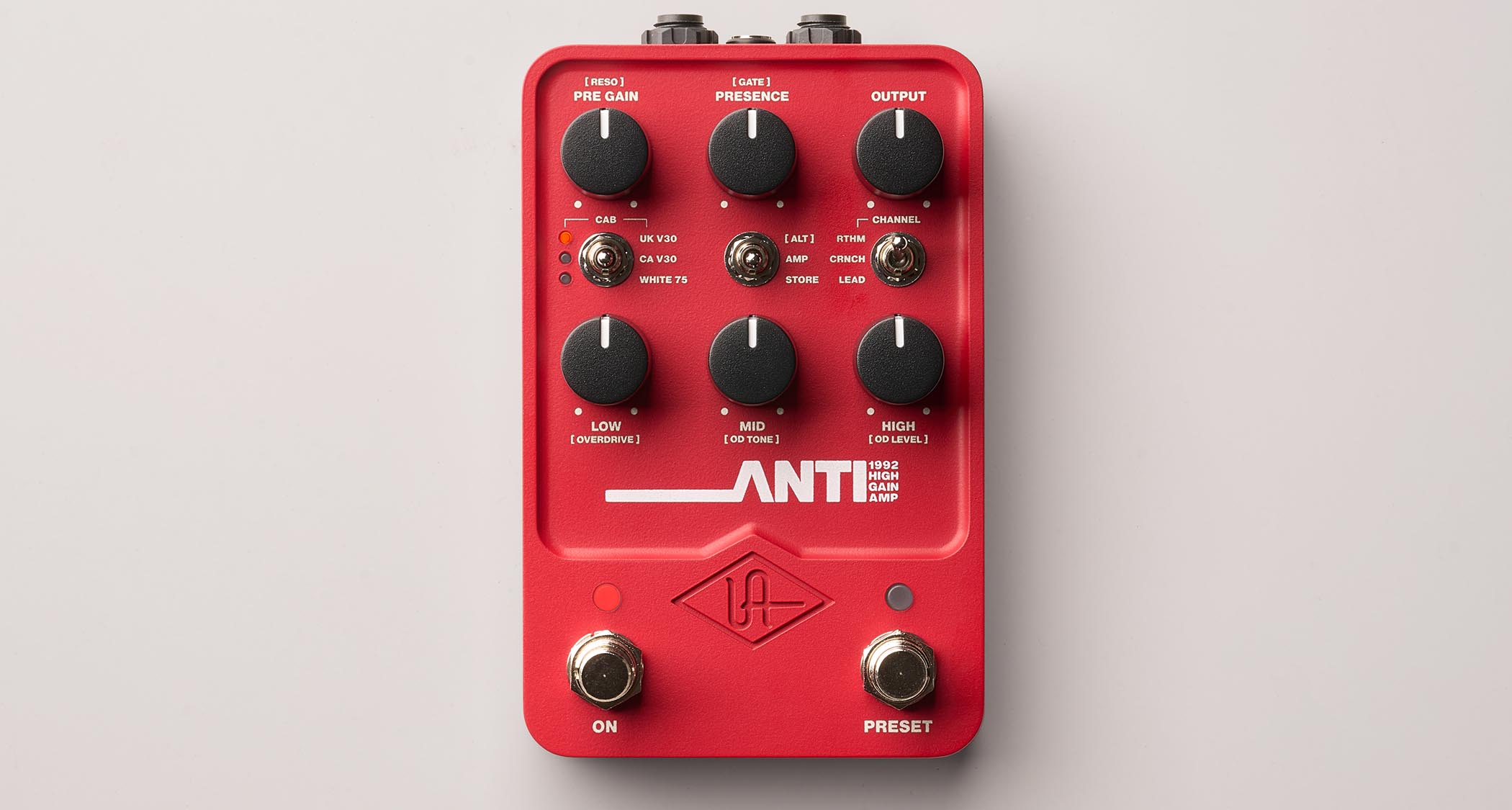
Launch price: $389/£359/€429
Type: Amp and cab modelling pedal
Made: Malaysia
Controls: Pre-gain, Presence, Output, 3-band EQ (Alt controls for noise gate and preamps), two footswitches
Features: Peavey 5150 emulation with overdrive, preamp, noise gate and cab simulation, app control
Connectivity: Two unbalanced inputs and outputs (also configurable as an effects loop), USB-C, Bluetooth
Power: 9VDC, centre-negative, 400mA minimum (not included)
Weight: 1.34 lbs/0.605 kg
Dimensions: WxHxD mm 920x650x1410
Contact: Universal Audio
Universal Audio Anti 1992 High Gain Amp pedal: Build quality
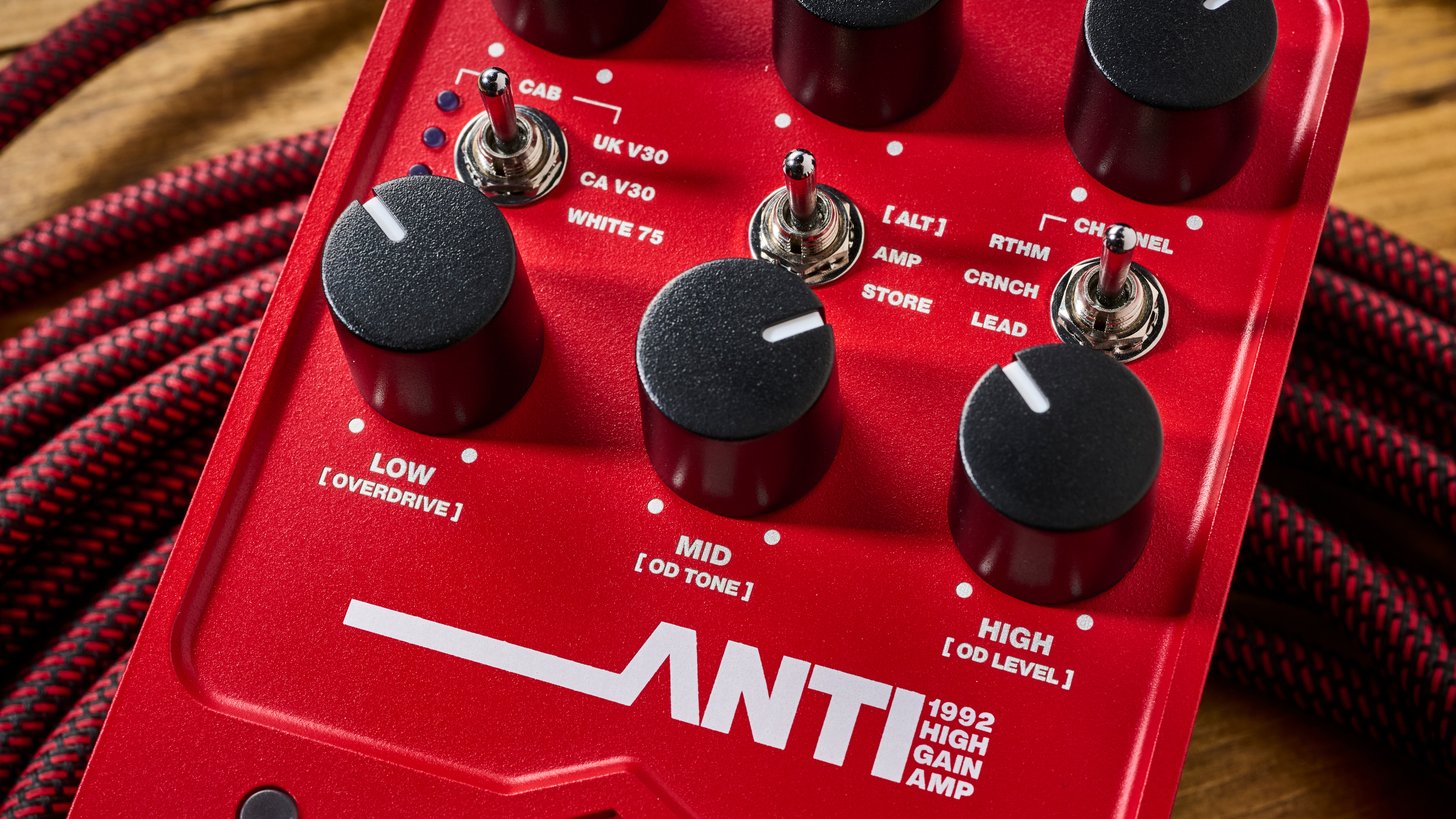
Build quality rating: ★★★★½
The UAFX line has already demonstrated that the rugged and well-built metal chassis is more than able to meet the rigours of the road. The Anti is no different. The red and white livery is a nice little nod to Van Halen and a welcome change to your standard black or silver (UA has clearly left that option for the new Knuckles ‘92 pedal).
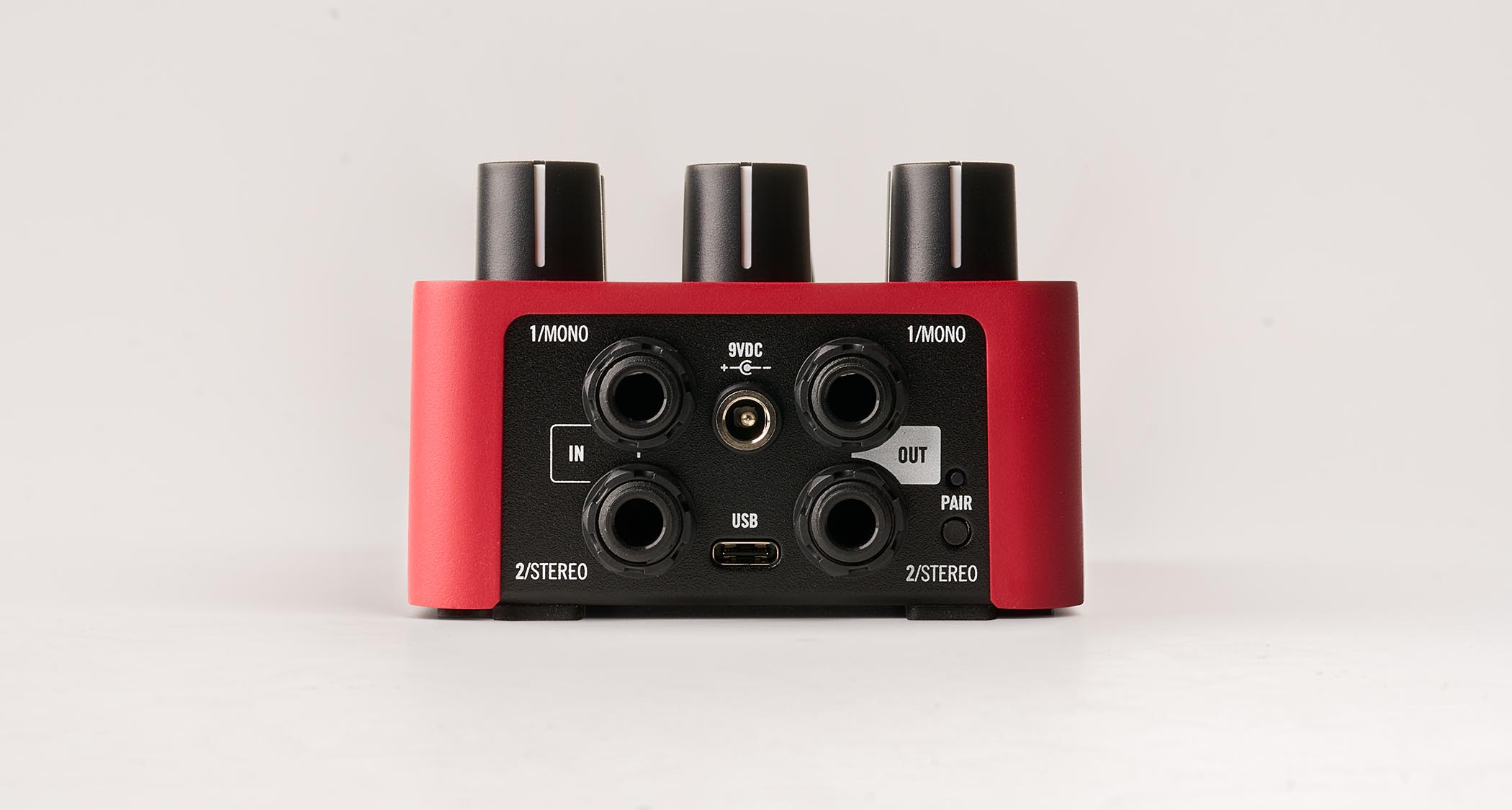
Despite the inclusion of plastic knobs, the pots themselves offer enough resistance to deliver precise control. The build itself is of the usual high quality that we’ve come to expect from Universal Audio, with no loose nuts or signs of misaligned hardware here.
Universal Audio Anti 1992 High Gain Amp pedal: Usability
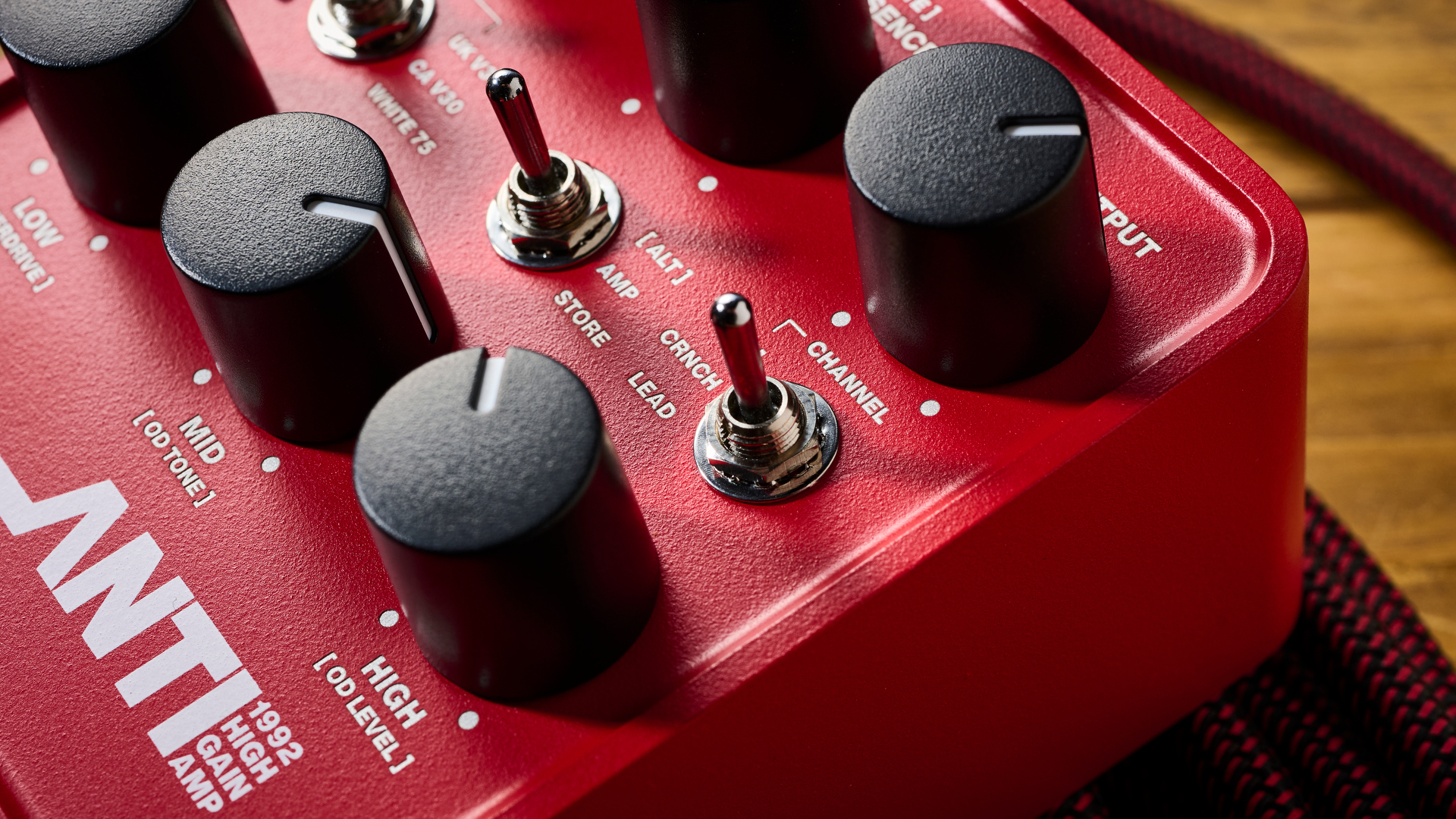
Usability rating: ★★★★☆
Pretty much any amp modelling pedal will inevitably have some sort of reliance on an app, whether it's desktop (Win/Mac), mobile (Android/iOS), or both in Anti's case. Connectivity with the UAFX range is both Bluetooth for mobile and USB-C for desktop, with the latter the only option for updating firmware.
Now, we've had lots of issues with UA's digital companions regarding past pedal releases, especially with the original lineup. Things have gotten better, but not entirely fuss-free. Typically, setting up on a Windows system has caused the most grief. Numerous attempts had us reaching for the iOS and Mac versions, which, thankfully, are more robust despite the former being agonisingly slow when connecting. The mobile also app suffers from disconnecting with the pedal after a while, which can be annoying if you're thinking of tweaking it in a live scenario.
With the app, you are afforded more options, which we'll go into more detail on in a moment, but first it is worth mentioning that straight out of the box, the Anti is ready to rock. It was a good while before I was reaching for the app. The controls are very straightforward and a fair amount of options are available to you before you dive into the app's options.
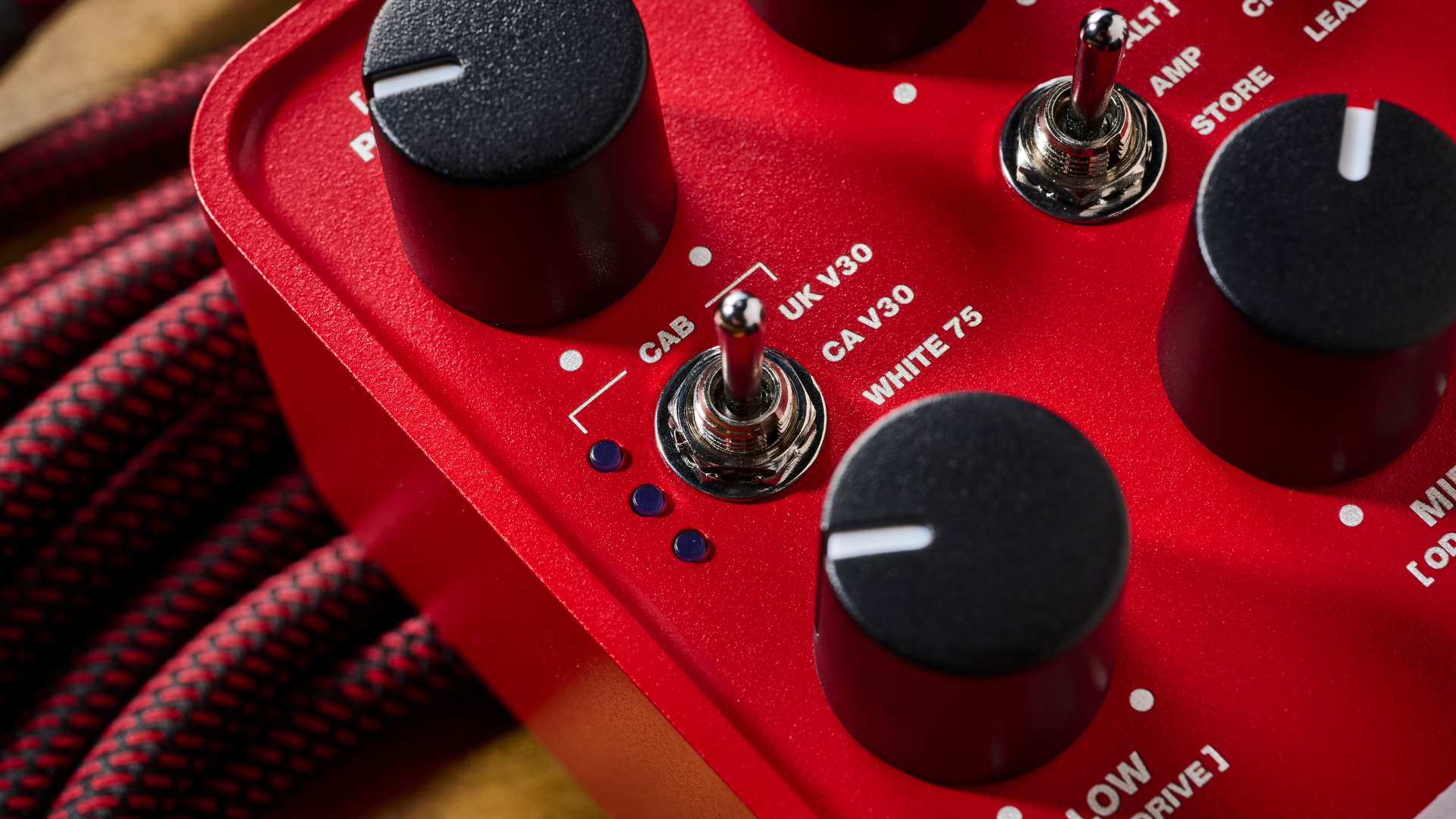
Six rotary knobs, three toggle switches and two footswitches adorn the interface, with a familiar layout to the Anti's UAFX stablemates. All six rotaries have dual functionality. The Amp controls consist of Pre-Gain, Presence, Output gain and a three-band EQ. Flick to the Alt option and you have access to the overdrive gain, tone and level, noise gate and resonance controls. It’s all familiar territory, especially for past users of the 5150.
Thankfully, there are also options for the noise gate within the Edit menu, as the default setting is somewhat harsh to say the least
Within the app, you can toggle between the TS Overdrive or the TC Preamp types. Then there's the ability to tweak even more sound-shaping functions and even the footswitch layout. By default, the footswitches are designated for Live/Preset mode where you’re able to toggle between the stored preset and live amp controls with the Preset switch, or bypass everything with the On switch.
There are two more modes: Gate and Boost. Both change the use of the On switch, leaving the Anti in a permanently on state. Thankfully, there are also options for the noise gate within the Edit menu, as the default setting is somewhat harsh to say the least, giving you the ability to tweak the Threshold, Attack, Release, Attenuation and Hold.
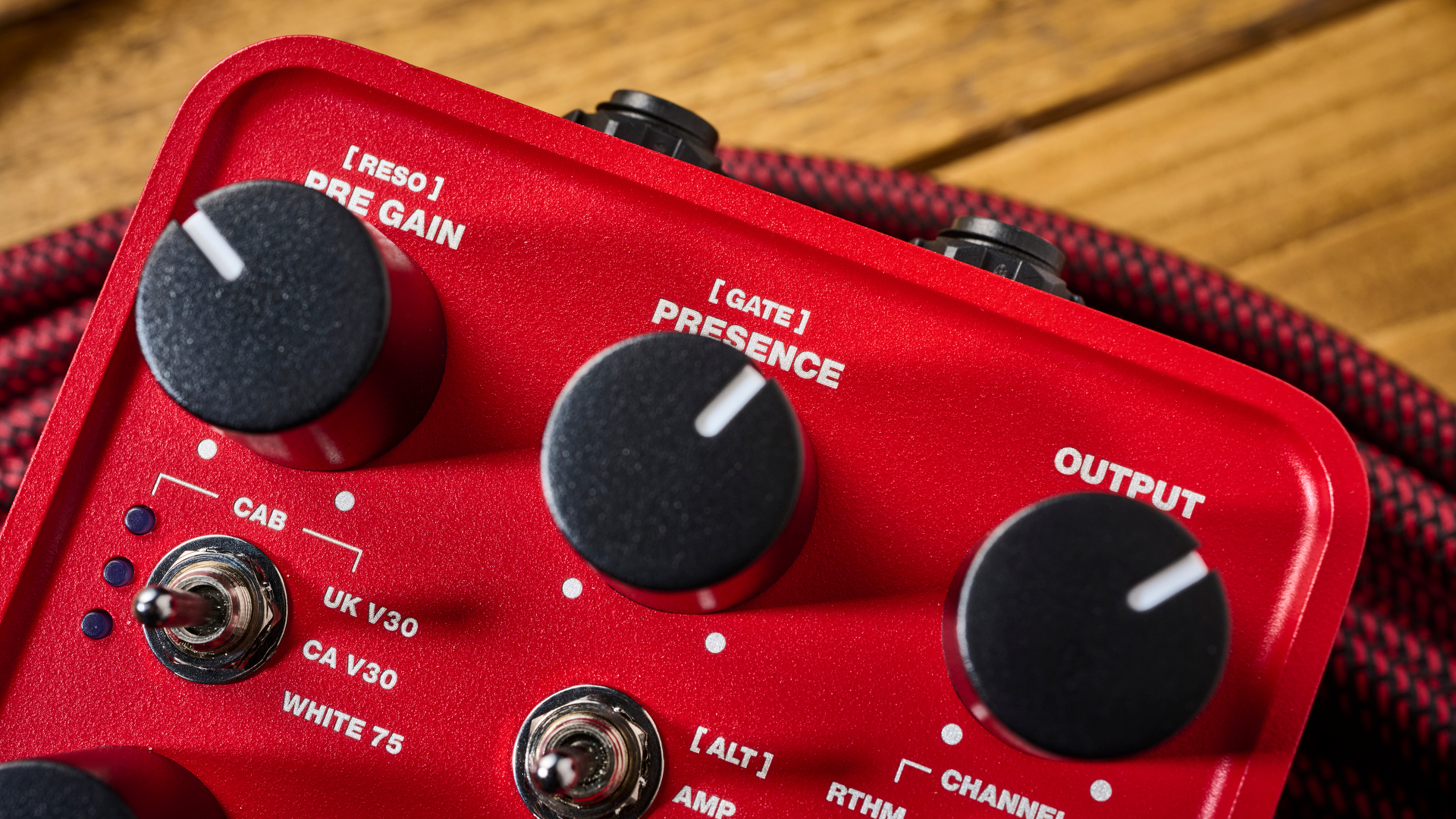
At the other end of the signal chain, you can select between four different power amp Bias options: Cold, Warm, Cold Choke and Warm Choke. They all serve as different ways to scoop those mids, with varying levels of clarity and warmth of tone. Then you have a Post Gain level, which is ideal in boosting levels in your signal chain.
The app opens up plenty of opportunities for Anti to be used in different scenarios and the extra sound-shaping tools are most welcome. The one issue that slightly sticks in the craw is that there’s currently no way of adding some extra functionality for the footswitches. I would’ve liked to have the ability to cycle between the channels, especially with the added Punch option on the RTHM channel. Even a MIDI option would be welcome here.
Universal Audio Anti 1992 High Gain Amp pedal: Sounds

Sounds rating: ★★★★★
The Anti's greatest strength, much like the rest of the UAFX range, is that it does one job very well
Had I not been writing a review, it could've been ages before I reached for the app to download more presets and access the full functionality, such were our first impressions. The Anti's greatest strength, much like the rest of the UAFX range, is that it does one job very well. The job of emulating the 5150 is a triumphant one. As soon as we plugged in, we were instantly transported back to the mid-'90s, riffing through the NWOAHM and early metalcore hits – familiar territory for these ears.
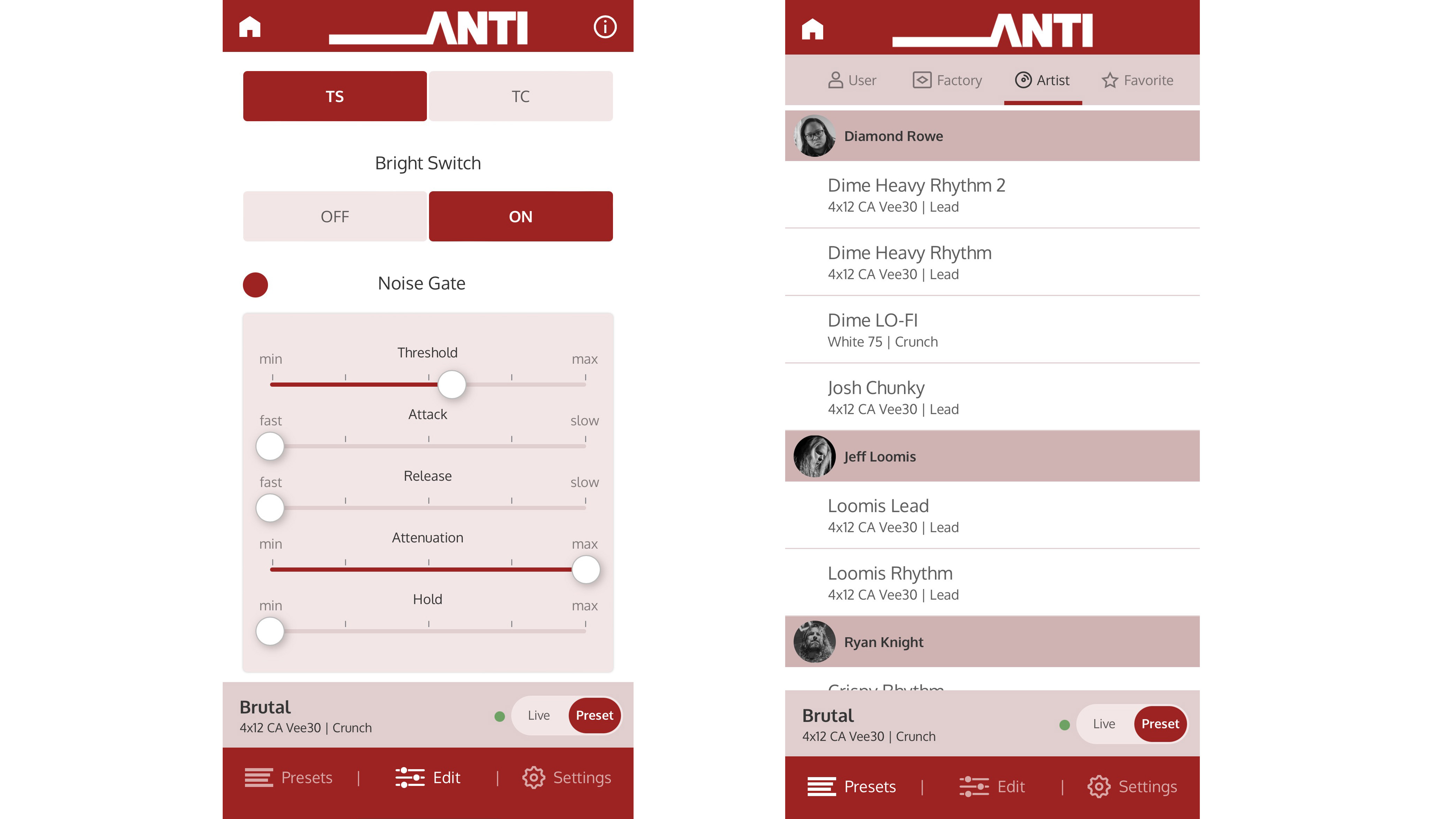
Those familiar with the 5150 will no doubt have their own, go-to settings and I had mine: dial all the EQ to midnight and let the overdrive do all the talking. It worked then and it works now. While I would've been satisfied with the box fresh options available, including the three cab emulations, once you dive into the app you get far more control over your tone. As mentioned earlier, by registering the pedal through the app you get three additional cab sims.
Using the app is a bit like Pandora’s box (I’ve barely put it down) and the extra presets serve as a nice showcase of what the Anti can achieve. Alongside a ton of factory presets there are a handful of artist additions from the likes of Jeff Loomis, Ryan Knight and Tetrarch's Diamond Rowe (very fitting that we’re also testing Diamond’s new signature Jackson for this review).
For our taste, the three extra sims worked better with a lower gain tone and can get a bit muddy when you're trying to paint with chainsaw-like clarity
Of all the cab sims at my disposal, I did have a favourite in the CA Vee 30 and it seems I wasn't the only one as pretty much all the artist presets plumped for the same cab. It has clarity and low-mid aggression that perfectly complement the gain at your disposal here. The three default cab sims are miked with an SM57 to keep things simple.
The additional three sims add some ribbon mics and different speaker configurations for slightly more complex sonic characteristics. For our taste, the three extra sims worked better with a lower gain tone and can get a bit muddy when you're trying to paint with chainsaw-like clarity. There’s also the option to bypass the cab sim altogether allowing you to slot the pedal in an existing set-up with your own cab sim/IR solution. The option of adding Room ambience to the cab is a nice touch, but it's not on the output and will only work when a cab sim is selected.
The original 5150’s lineup of Clean, Crunch and Lead channels has been improved upon with the inclusion of Punch and Punch+ options on the RHTM channel. Punch essentially combines elements of Clean and Lead channels together, while Punch+ adds some extra emulated circuitry from a JCM800 for an even richer tone.
Universal Audio Anti 1992 High Gain Amp pedal: Verdict

Since testing this pedal out, I had forgotten how good the Clean channel on the 5150 is
The beauty of the Anti is that it is way more than just a 5150 emulation, the extra tonal options at your disposal bring this mid-’90s classic bang up-to-date. The integrated overdrive and preamp boost give you the option to hone your tone and tighten up the edges, and it ticks all the big metal subgenre boxes you can think of. Both levels of Punch really add to Anti’s versatility and for my money, it’s the secret sauce.
In fact, since testing this pedal out, I had forgotten how good the Clean channel on the 5150 is. You can get similar results running the Clean channel with some overdrive (cab sim bypassed) into another amp. I tested it into Positive Grid’s Treadplate amp sim for some thoroughly face-melting, yet strikingly clear results. It had me seriously champing at the bit in readiness for the new Knuckles ‘92 pedal. I have a feeling both the Anti and Knuckles will play very well together.
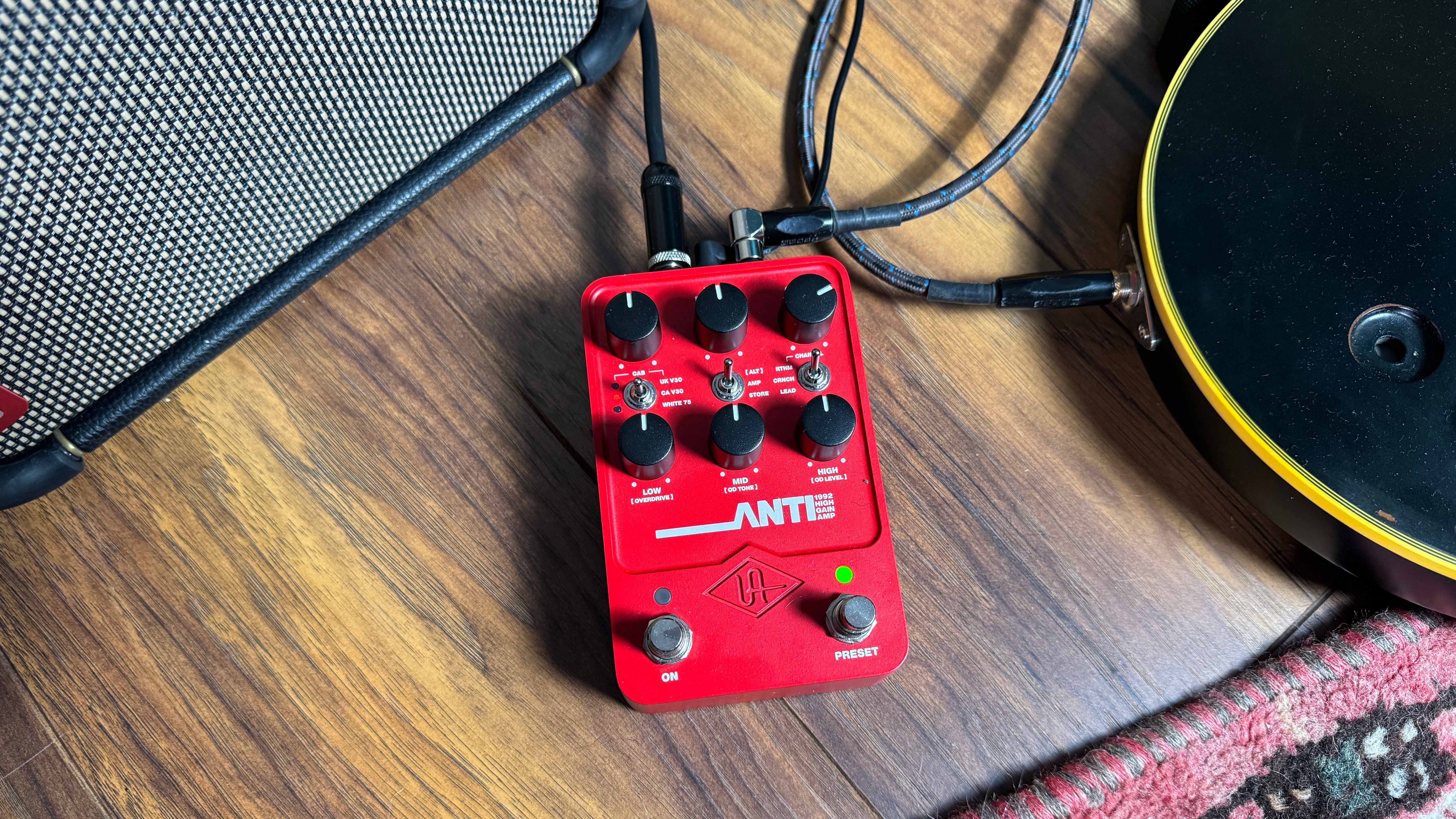
It’s fair to say that many guitarists with a bias to metal have fully embraced the world of capturing and modelling and you'd be hard-pushed to prize them from their trusty Quad Cortex. Granted, Anti is more of a one-trick pony in comparison to the Cortex family and Kemper offerings, and you can find more affordable options from Line 6 and IK Multimedia, but its simplicity makes it an ideal addition to a pre-existing pedalboard; as a centrepiece for a simple, no-nonsense live rig; or another preamp option in the studio.
The added bonus of onboard overdrive/preamp options, a noise gate and six cab sims make it a real space-saving solution to any setup. Universal Audio has another modelled hit on its hands.
MusicRadar verdict: The Anti is the best modelled 5150 emulation we've come across and it has way more up its sonic sleeve than the original, we're smitten.
Universal Audio Anti 1992 High Gain Amp pedal: Also try
($619.99/£449)
For high-gain-everything-in-a-pedal, the Dept. 10 Amped 3 pedal from Blackstar is well worth a look, with its multiple cab sims, added overdrive, headphone output and you even get reverb. For the money, Amped 3 just edges the Anti for the inclusion of the 100-watt, Class D digital power amp.
Read our review
($99/£89
If you want to go down the pure 5150 emulation route on a budget, then check out the tiny preamp pedals from Mooer. They first launched with the 015 Brown Sound which has since made way for the updated 005 Brown Sound 3 model. While it might seem like the cheapest solution, the costs add up if you’re building a 'board from scratch. Once you’ve factored in the overdrive/preamp, noise gate and cab sim you’re not far off the cost of the Anti taking up just the one power slot on your pedal power supply and pedalboard.
($549/£499)
We couldn’t talk about any kind of metal-tinged, high-gain pedal without the mention of Neural DSP. The Quad Cortex, is clearly out of this price range but the new Nano Cortex is only just over $/£100 more than the Anti. Of course, the Nano has a far wider scope than the Anti, but focuses on capture rather than the UA approach to deep modelling. If you’re after more of a Swiss Army knife of tone and willing to go down the capturing rabbit hole, then splash the extra cash. Otherwise, keep it simple and detailed with the Anti.
Read our review







